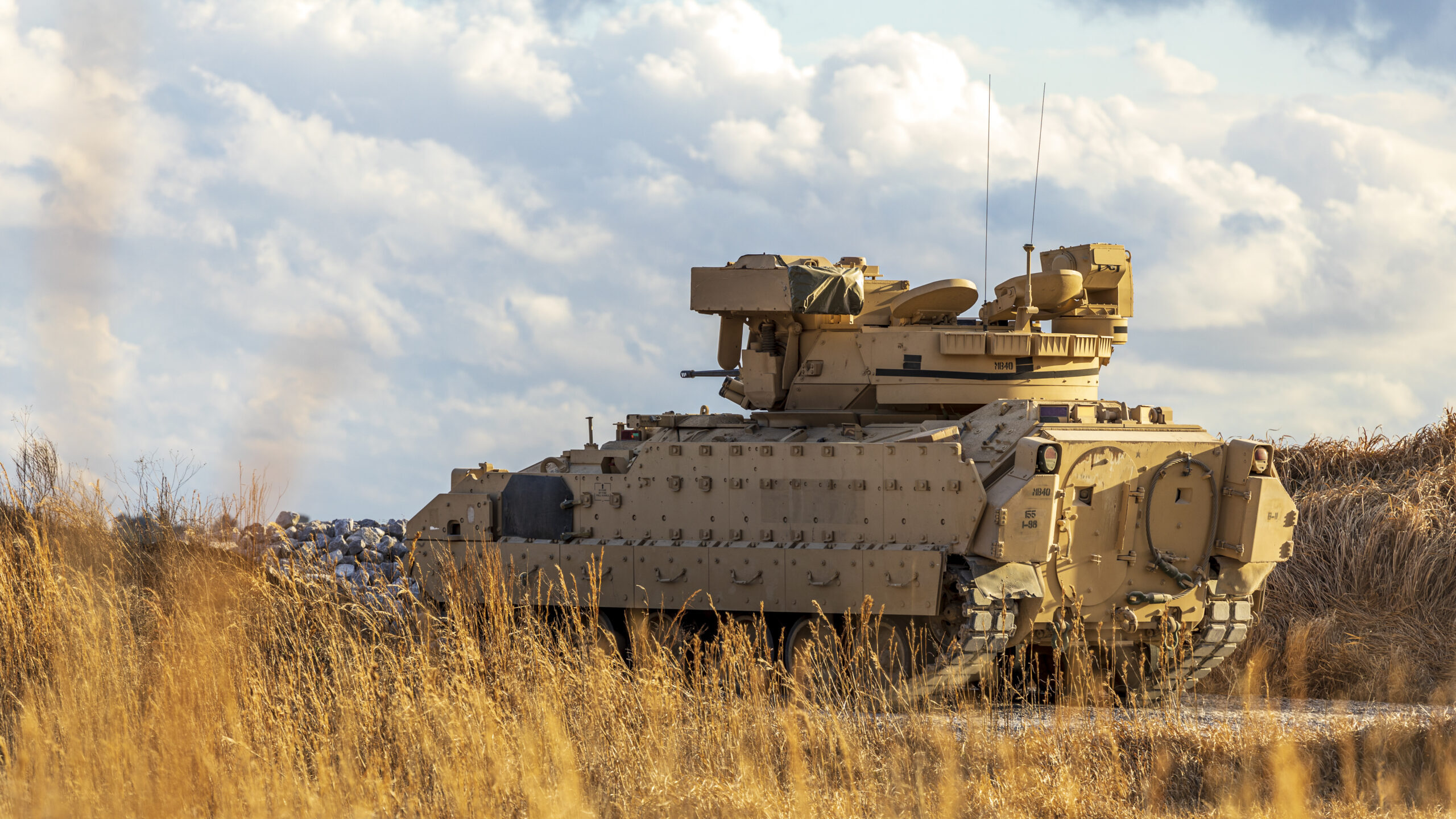‘Good, healthy debate’: Eyeing the Indo-Pacific, Army leaders grapple with force structure shake up
An M2A3 Bradley Infantry Fighting Vehicle prepares to fire on a range at Camp Shelby Joint Force Training Center, Miss., Feb 26, 2021. (U.S. Army National Guard photo by Sgt. Jovi Prevot)
WASHINGTON — There is currently a “good, healthy debate” going on inside the Army about some force structure and training changes the service may need to make to be able to fight a modern war, according to some of its most senior commanders.
“We’re going to have to change how we’re organized…. That’s one of the things that we have to go down the focus areas and ask four-star commanders and sergeant majors to take a look at and review,” Army Vice Chief of Staff Gen. Randy George told an audience Tuesday at a Maneuver Warfighter Conference. “How are we structured and what needs to adjust based on the advances that we’re seeing? We are [also] going to have to change how we train.”
“The character of war has probably changed more in the last couple of years, and it’s a more complex environment, than certainly I’ve seen for 35 years,” George said.
Nominated to be the next Army chief, George has been serving as the service’s top uniformed officer in an acting capacity since Gen. James McConville retired in early August. Since taking the reins temporarily while he awaits Senate confirmation, he unveiled his four focus areas — warfighting, delivering ready combat formations, undergoing continuous transformation and strengthening the profession of arms — and said he recently wrapped up meetings with four-star commanders and sergeant majors about how to implement changes.
While those changes have not been finalized and Geoge did not detail possible force structure changes, the head of Army Futures Command Gen. James Rainey and US Army Pacific commander Gen. Charles Flynn did preview some options under consideration.
For his part, Rainey said he does not envision a future where the service is simply division-centric or brigade-centric as in the past. Instead, he said he’s trying to look through the maneuver lens and figure out what it will take to win in a different theater.
“Over the last 20 years of fighting… we kind of got into thinking about fires as something you do to condition maneuver,” Rainey said Wednesday at the maneuver conference. “I think the future, especially in the Indo-Pacific…is going to be about maneuvering to position fires.”
“That’s a big fundamental change, because that will have changes to force structure,” he added. “We only got so many people. Do you need three ABCTs [armored brigade combat teams] supported by one fire brigade? Or should we maybe look at some kind of balanced combination or is the future going to be a couple BCTs and three, integrated firing formations with organic air and missile defense?”
When it comes to the composition of those BCTs, Rainey said everything is pre-decisional, but changes will likely come. Although he dubbed the infantry BCTs as the service’s “best formation,” Rainey noted that they have 14 vehicles, and a mix of “light and motorized” formations might be better.
Meanwhile, the ABCTs outfitted with both M1 Abrams tanks and M2 Bradley infantry fighting vehicles, are currently “way too heavy,” and “complex” to be sustained and an overhaul will need to be made, Rainey told the audience.
“We built brigade combat teams, I commanded one, I commanded a division full of them,” Rainey said. “My brigade combat team was responsible for a third of Iraq, hell, everything from drinking chai to chasing Iranians. That’s not the future.
“A 30-day fight against a good enemy trying to get across a river to try to breach a five [kilometer] minefield, I think our BCT will be consumed by the flight they’re in, and if they’re not in a fight, they’re going to be consumed by staying alive,” he added.
In addition to ongoing discussions about BCT competition, Flynn said service leaders are also weighing the roles of four newer “transformative efforts”— the multi-domain task force, security force assistance brigade, theater fires elements, and the theater information advantage directorate.
“These organizational adjustments… are things that we in the army are having to have a good, healthy debate about,” Flynn told reporters via phone on Wednesday. Some of that ongoing “important work” includes deciding what echelon do those four units and elements belong to, how many should there be, where they are placed, and roles and missions, he added.
“Everybody pays a lot of attention to a new weapons system or a new ammunition,” Flynn said. “A lot of times they’re not paying attention to the organizational adjustments that are going on, and I believe that the organizational adjustments are, maybe, more important, or equally as important.”
Recommended
No Byline Policy
Editorial Guidelines
Corrections Policy
Source
